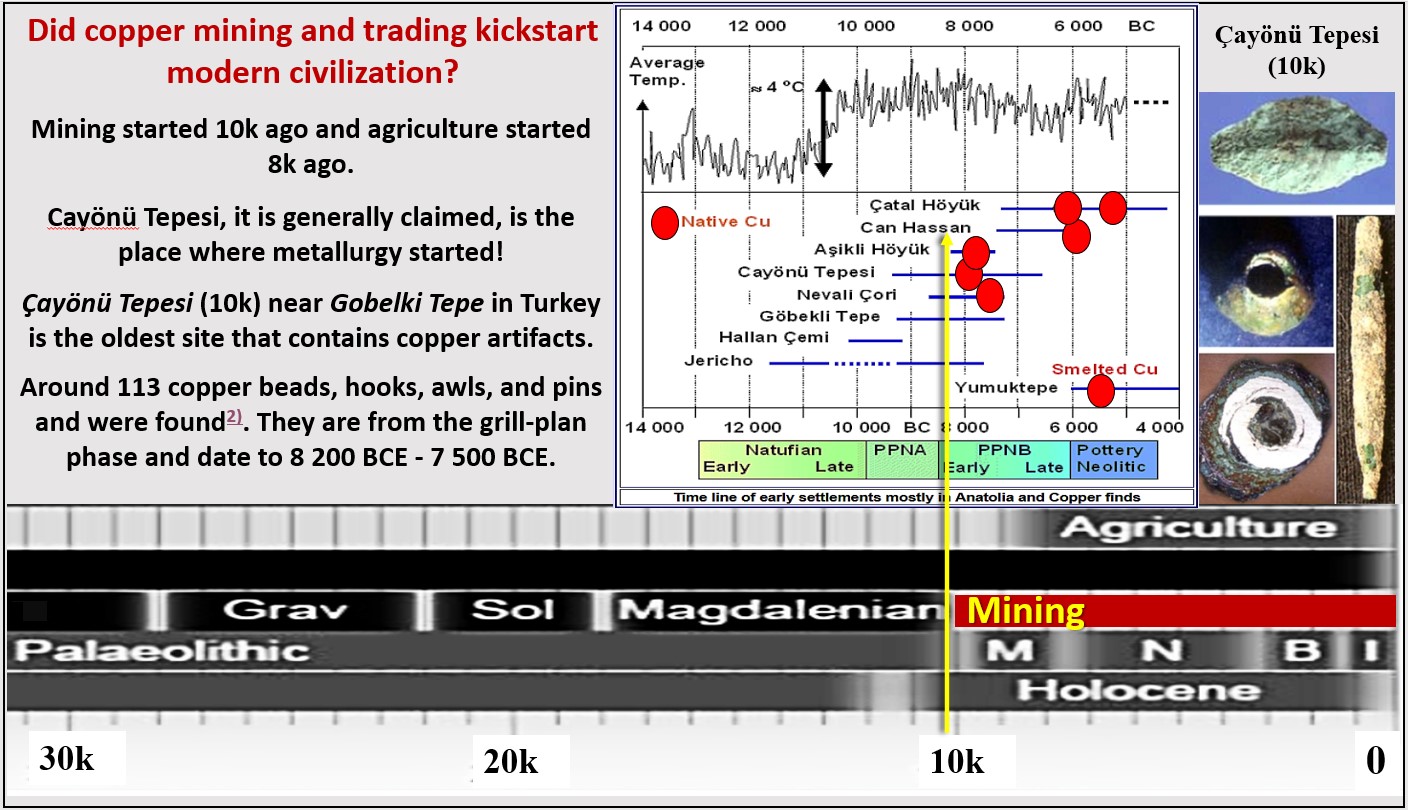Mining started 10,000 years ago and agriculture started 8,000 years ago.
Çayönü Tepesi (10k) near Gobelki Tepe in Turkey is the oldest site that contains copper artifacts.
Cayönü Tepesi in Turkey, it is claimed, is the place where metallurgy started!
Around 113 copper beads, hooks, awls, and pins and were found. They are from the grill-plan phase and date to 8,200 BCE – 7,500 BCE.
An overall timeline of human evolution and endevour is shown below.
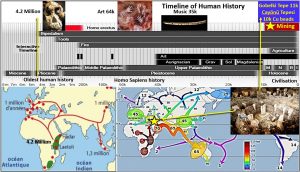
Humans originated in Africa around 4.2 million years ago. They spread all over the earth and were still mainly hunter gatherers until they discovered the ornamental and practical uses of copper about 10,000 years ago. This mining of copper coincided with the start of advanced civilisation.
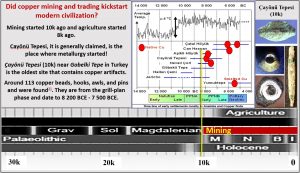
The first copper artifact found was at Tell Qaramel, Syria. Polished copper nugget from horizon 2 dating from 10,464 – 9,246 BCE. There are nearby deposits of malachite.
Around 113 copper beads, hooks, awls, and pins and were found at Çayönü Tepesi in Turkey. They were mined from an ore deposit at Ergani Maden, only 20 km away, which is still worked for copper today.. They are from the grill-plan phase and date to 8,200 BCE – 7,500 BCE.
Copper occurs as native metal which can be beaten into useful shapes. They made copper beads at Çayönü Tepesi that had been shaped by flattening out the native copper and then winding it into shape and annealing it with heat.
The elaborately planned and carved Golbeki Tepe temple site shows that, coincident with the start of copper mining, civilisation flourished. Civilisation then seemed to decline from about 7,000BCE until about 5,000BCE when it re-emerged not far away in Mesopotamia.
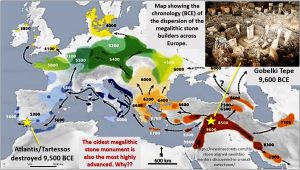
This figure shows the spread of civilisation all over Europe (represented by megalithic monuments) and the world, from the centres where advanced civilisation started in southern Turkey.
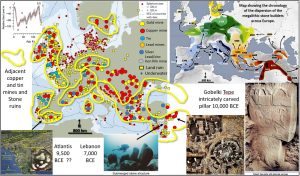
There is about an 80% correlation when the Megalithic sites in Europe are plotted against ancient mines. This suggests that copper mining was instrumental in kickstarting advanced civilisation in Europe.
Hypothesis. Copper had a much higher intrinsic wealth to ancient societies than agricultural products. Labour was cheap! The exploitation of rich native copper deposits made these tribes much richer and so were able to organise labour, pay armies, conquer their neighbours, gain peace and build their temples. Thus it has remained so!
Conclusions. The close correlation, spatially and chronologically, of the oldest known civilisations with nearby mines with native copper, most likely kickstarted more advanced societies by the manufacture and trading of copper goods and weapons. This required labour and provided a surplus trading wealth. Modern civilisations and empires, while being initially agricultural, were kickstarted very early into rapid growth by metal mining and trading? This scenario happened in all ancient historical civilisations (Mesopotamia, Egypt, India, China, Americas) and more recently in North America, Australia, New Zealand and Africa.
Follow my research and see how geology can give a window into our distant past.
Share this post!

